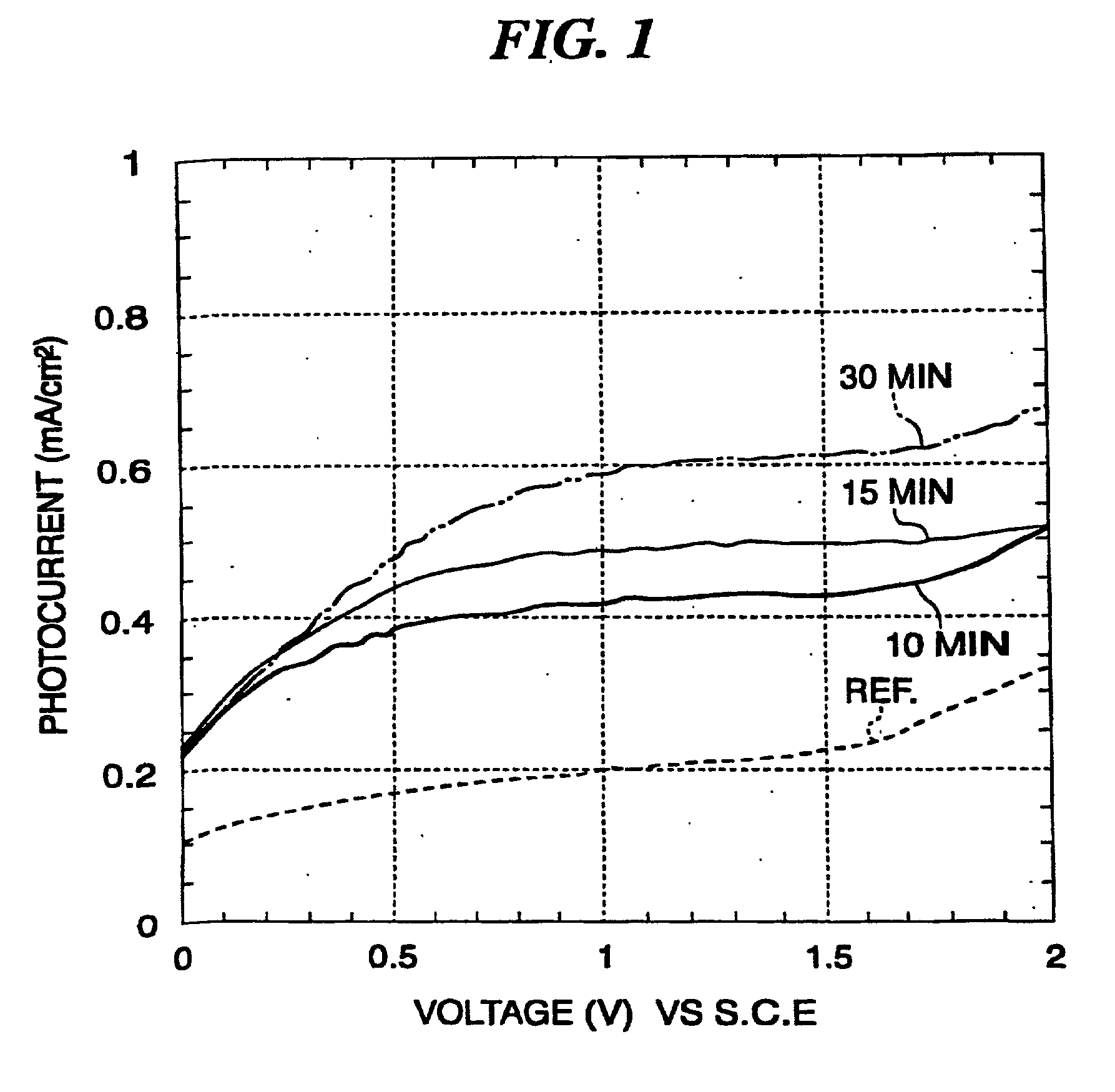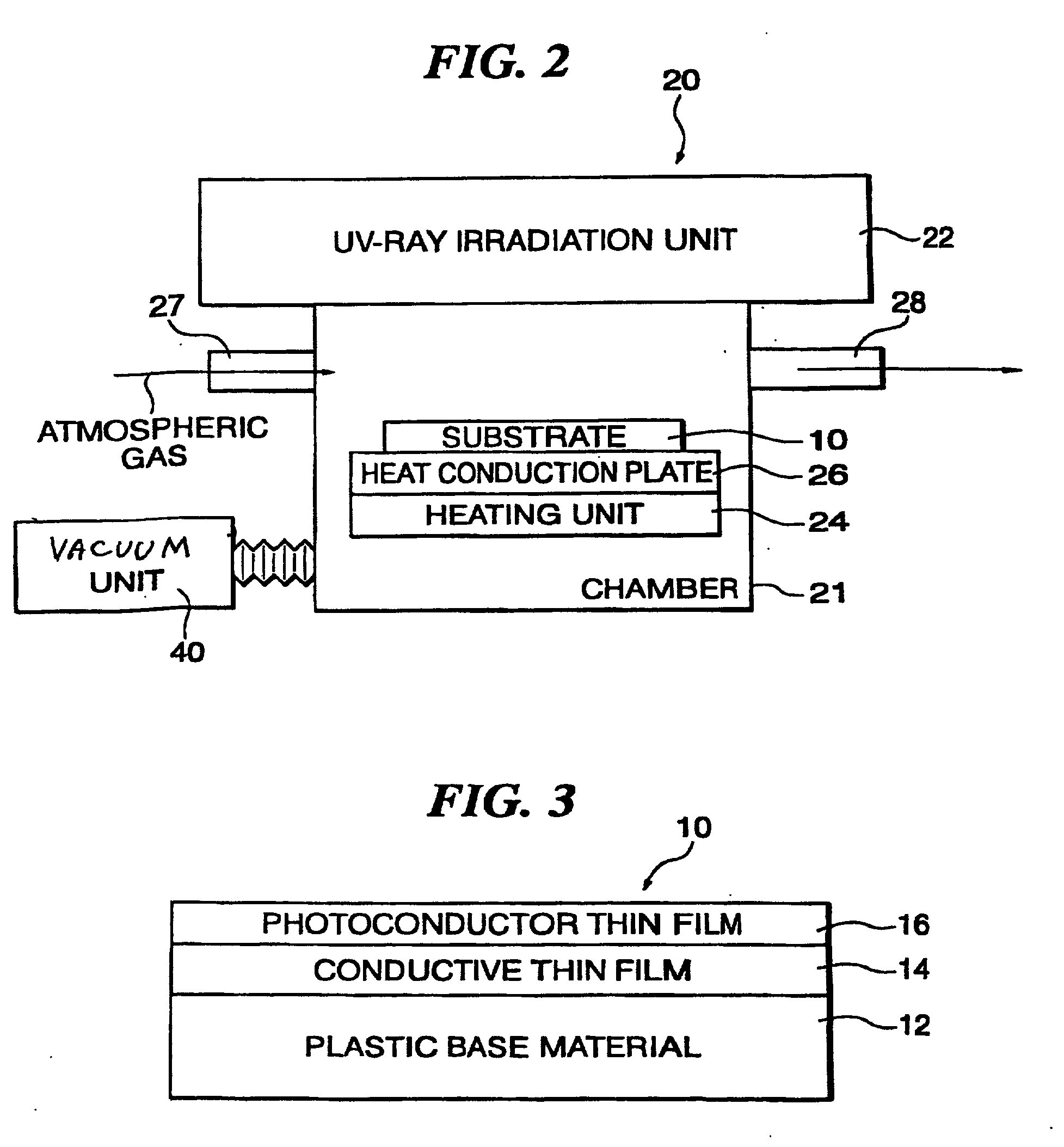Method of forming crystalline semiconductor thin film on base substrate, lamination formed with crystalline semiconductor thin film and color filter
a technology of crystalline semiconductor and thin film, applied in the direction of crystal growth process, instrumentation, vacuum evaporation coating, etc., can solve the problems of increasing the cost in view of economics, the inability to form the photoconductor thin film by this method on the plastic substrate to be described later, and the need for an expensive apparatus
- Summary
- Abstract
- Description
- Claims
- Application Information
AI Technical Summary
Problems solved by technology
Method used
Image
Examples
example 1
[0087] To a non-alkali glass substrate of 0.7 mm thickness (Corning 1737 glass), amorphous titanium dioxide was deposited at a film thickness of 200 nm at a substrate temperature of 180.degree. C. using an RF sputtering method. Then, using an experimental device as shown in FIG. 2 having an inner capacity of about 1 liter), after previously removing oxygen by a vacuum treatment (to 10.sup.-2 Pa), the glass substrate formed with titanium dioxide was heated to 150.degree. C. in a high purity nitrogen gas atmosphere containing 3% hydrogen gas (flow rate: 1 l / min, atmospheric pressure), and UV-rays (wavelength: 172 nm, light intensity: 10 mW / cm.sup.2) were applied for 10 minutes by an excimer lamp (manufactured by Ushio, Inc.) while keeping the temperature.
[0088] When the X-ray diffraction intensity of the resultant annealed film was examined. A diffraction peak was observed at 2.theta. of 25.260. Further, as a result of examination for the angle of contact of the film, it was 1.5.degre...
example 2
[0090] On a plastic sheet of 0.1 mm thickness (PES mm, manufactured by SUMITOMO BAKELITE), an annealed film was formed on the plastic sheet in the same manner as in Example 1 except for changing the temperature for the annealing treatment to 125.degree. C.
[0091] When the X-ray diffraction intensity of the resultant annealed film was examined. A diffraction peak was observed at 2.degree. of 25.260. Further, as a result of examination for the angle of contact of the films it was 2.5.degree. and it was observed that the surface was strongly hydrophilic.
[0092] The result described above supports that amorphous titanium oxide was converted into crystalline titanium oxide (photoconductor) by the annealing treatment.
example 3
[0093] A crystalline titanium oxide thin film was formed on a plastic sheet in the same manner as in Example 2 except for changing the temperature for the annealing treatment to 50.degree. C. and the UV-ray irradiation time to five hours.
[0094] The resultant thin film showed the same nature as that in Example 2.
PUM
| Property | Measurement | Unit |
|---|---|---|
| temperature | aaaaa | aaaaa |
| temperature | aaaaa | aaaaa |
| temperature | aaaaa | aaaaa |
Abstract
Description
Claims
Application Information
 Login to View More
Login to View More - R&D
- Intellectual Property
- Life Sciences
- Materials
- Tech Scout
- Unparalleled Data Quality
- Higher Quality Content
- 60% Fewer Hallucinations
Browse by: Latest US Patents, China's latest patents, Technical Efficacy Thesaurus, Application Domain, Technology Topic, Popular Technical Reports.
© 2025 PatSnap. All rights reserved.Legal|Privacy policy|Modern Slavery Act Transparency Statement|Sitemap|About US| Contact US: help@patsnap.com



